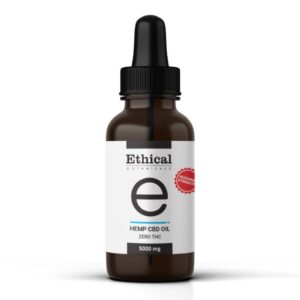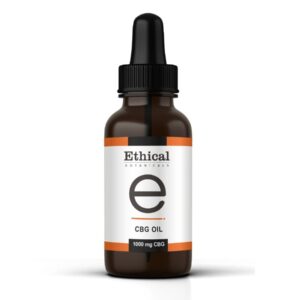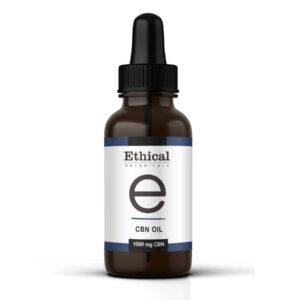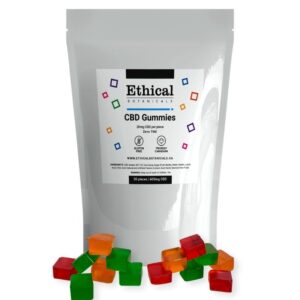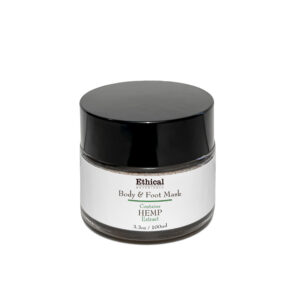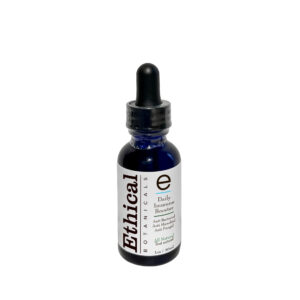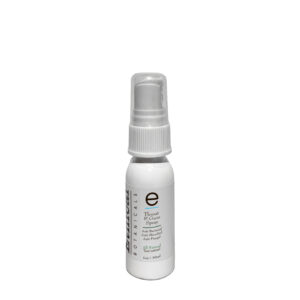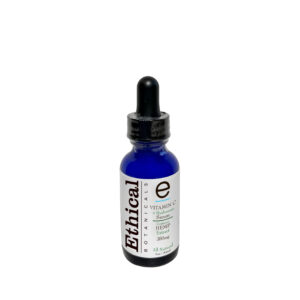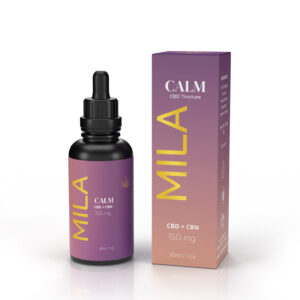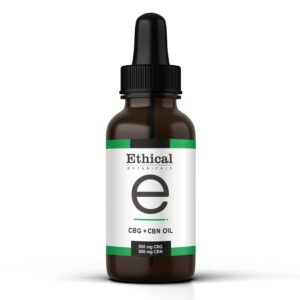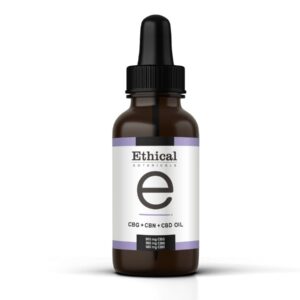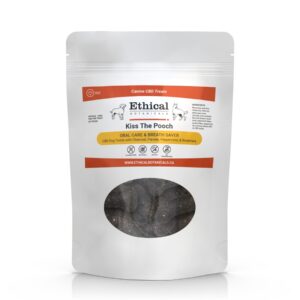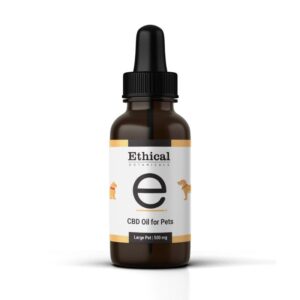CBD Oil Direct
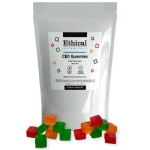
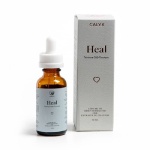
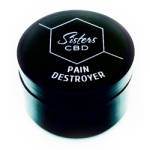
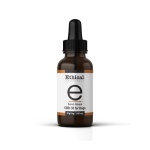
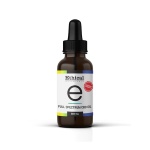


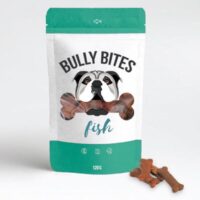
Shop Premium CBD Oil Products
CBD Oil
-
Rated 5.00 out of 5$38.00 – $320.00 Select options This product has multiple variants. The options may be chosen on the product page
-
Rated 4.92 out of 5$35.00 – $320.00 Select options This product has multiple variants. The options may be chosen on the product page
CBD For Sleep
CBD For Pets
-
Rated 4.78 out of 5$33.00 – $83.00 Select options This product has multiple variants. The options may be chosen on the product page
-
Rated 5.00 out of 5$35.00 – $60.00 Select options This product has multiple variants. The options may be chosen on the product page



Secure Shopping, 110% Money Back Guarantee
You can shop with us with confidence. Not only are all our transactions fully private and encrypted, we are so devoted to customer satisfaction that we’ll give you 110% of your money back if you are not fully satisfied with your purchase. Simply return the product within 30 days, no questions asked.
Buying CBD Oil in Canada has never been easier, faster or more secure!
CBD Oil Direct is the go-to online dispensary for high-quality CBD products. Never before has buying premium, lab-tested CBD oil in Canada been so easy. At CBD Oil Direct we have everything from Full Spectrum CBD Oil, to CBD gummies, even CBD for pets! We’ve curated our selection of products and brands on the basis of quality and reliability, to ensure you–the consumer–get nothing but the best. Whatever you’re looking for, we make finding a product that fits your specific needs easier than ever.
Know About Cannabidiol (CBD) Oil
What is CBD Oil?
CBD, also known as Cannabidiol, is a compound naturally produced by hemp and cannabis plants. CBD is a cannabinoid, and is just one of the 113 cannabinoids hemp and cannabis plants produce. THC—CBD’s more famous cousin—is another compound from the cannabinoid family. However, unlike THC, CBD does not get you “high.”
To make CBD oil, CBD is first extracted from hemp plants and then infused into a carrier oil, usually MCT oil—which is derived from coconuts. Some brands may use other oils such as sunflower, grape seed or hemp seed oil to create their versions of CBD oil. In Canada, CBD oil has seen its popularity skyrocket. This is largely thanks to widespread testimonials coming from people trying CBD oil in Canada to improve their quality of life. There’s plenty of anecdotal evidence CBD helps people, but there’s little scientific evidence that supports CBD’s medical use so far. Fortunately, with the legalization of CBD in 2018, thousands of new studies are underway, with researchers seeking to understand how CBD works and what it can actually do.
Despite the science still playing catch-up, news of people’s positive experiences have spread and Canadians across the country have begun incorporating CBD into their self-care routines. For some this may mean a CBD capsule before bed, for others a CBD gummy or two in the morning, for others drops of CBD oil under the tongue. There are many ways to take CBD, including vaping CBD or smoking a joint rolled with high CBD cannabis flower, not to mention all the different topicals, CBD creams, bath, body, self-care products and lotions there are out there. There’s no shortage of selection out there, you just need to be discriminating. Always look for products that are tested for quality and impurities by a 3rd party lab.
Health Benefits of CBD Oil
Though there are thousands of testimonials out there from people using CBD oil in Canada that attest to CBD’s positive impacts on their quality of life, science can’t yet confirm all the hype. Be aware: most medical claims made about CBD are not backed by science.
What is generally known about CBD is that it promotes homeostasis in the body, and interacts with the human endocannabinoid system. CBD is also known to be a powerful anti-inflammatory and to have anti-anxiety properties too. However, what is not known is exactly how CBD works to achieve the observed effects, or how to use it in a precise way to address specific issues for different individuals.
So far, there are only a very few approved uses for CBD as medicine. Sativex is a THC and CBD based medicine used to treat painful muscle spasms caused by MS and other conditions. Another, called Epidiolex, is FDA-approved for the treatment of seizures caused by Lennox-
If you’re thinking of trying CBD, speak to a medical professional first. There are now many doctors now that are happy to advise their patients about using CBD. Many now even specialize in cannabis medicine. A growing number of them recognize CBD’s positive impacts, such as Canadian doctor Dani Gordon.
Be aware that CBD can interfere with the uptake of some prescription drugs in the same way that grapefruit does. Please do not take CBD if you are currently on medication.
How Do I Take CBD Oil Properly?
- What are the different ways to take CBD?
- How do I use CBD oil properly?
Concerning the first question, there are plenty of convenient ways to take CBD oil in Canada. The various ways to take CBD are important to think about as they impact overall absorption, how quickly you feel the effects, and how localized the effects are. Vaping CBD, for example, will delivery CBD more quickly to your endocannabinoid system. Additionally, you’d absorb more CBD by vaping than if you ate CBD in chocolate. Why? When you consume CBD in a chocolate, it has to pass through your digestive tract. The human liver and digestive system are quite efficient at scrubbing CBD out.
If you vaped CBD, you’d feel stronger effects for a shorter amount of time compared to eating a CBD chocolate. CBD that must pass through the digestive tract is largely eliminated, so less gets absorbed. However, it is released more gradually to the endocannabinoid system (ECS) and the effects are felt over a longer period of time.
One of the most popular ways to take CBD oil in Canada is by taking drops of CBD oil and holding it under your tongue for 30-90 seconds. There’s a large number of blood vessels there that offer CBD a route into the bloodstream that bypasses the digestive tract. This method is obviously less discreet than eating a gummy bear. Gummy bears just look like normal candy.
CBD creams and topicals are another method of getting CBD to your endocannabinoid receptors, many of which are found in muscle tissue and near the skin. CBD applied to the skin generally doesn’t make it into the bloodstream and affects mostly local ECS receptors. More CBD has to be applied to the skin to reach ECS receptors as CBD can’t simply go through skin, it can only get through pores. Generally speaking, only a very small fraction of the CBD applied to skin will make it down to local ECS receptors.
Concerning the second question of proper use, this is a question about dosage. What is the right dose? There is no answer to that question at this time. Scientists and medics are investigating this question, but it’ll be some time before we understand the human endocannabinoid system well enough to prescribe CBD with the accuracy of an FDA-approved medicine.
As no dosage advice is currently possible, people trying CBD oil in Canada for the first time are recommended to take the “Start low, go slow” approach. It’s also highly recommended that you keep a detailed daily journal of your experiences for at least a month or two. Start with a low dose of 5-10mg. Stay with it for a week and record your experiences daily. The effects of CBD are quite subtle as they provide no strong numbing sensation like some prescription medications. CBD only dials down certain systemic responses and brings your body back towards balance. When evaluating CBD’s effects, what you’re looking for is the absence or dialing down of things you’re trying to avoid.
After the first week has passed increase your dose by 5-10mg, depending on your weight. Record your experiences daily and see if you begin to notice differences. A week later, repeat this process of incremental increase, just 5-10mg. You can continue with this process of experimentation and self-observation for 1-2 months. This will give you a clearer idea of what dosage is helping you most. Factors that can affect your response to CBD is your natural tolerance, whether you are a habitual cannabis user, and the unique characteristics of your endocannabinoid system, among others.
It’s also important to know that more CBD is not necessarily better. CBD will act on different groups of endocannabinoid receptors at different dosages. One dose might make you sleepy, while another will make you more focused and alert, while another might be more anti-inflammatory. This is another reason why a steady, incremental process of experimentation is advised. Simply increasing the dose by a large amount won’t necessarily improve results. Look back through your journals for clues to finding your “sweet spot.”
What is the difference between Full-Spectrum CBD Oil and Hemp CBD Oil – No THC?
If you’ve shopped for CBD Oil in Canada before, you’ll probably have noticed that there are two main types. The most popular type of CBD oil in Canada is Full spectrum CBD oil. This kind of CBD oil is made with full spectrum CBD distillate—a resinous substance extracted from hemp/cannabis plants. Full spectrum distillate is rich with desirable natural compounds produced by its parent plant, including cannabinoids, terpenes, flavonoids and more—hundreds of compounds! The CBD concentration in full spectrum distillate can vary, but it usually falls in a range between 70%-90% per volume. The THC content of full spectrum CBD distillate is usually somewhere around 0.3-0.5%.
Hemp CBD Oil – No THC is made with CBD isolate. Isolate is a form of CBD that has been refined from the original distillate to become more than 99% pure cannabidiol. CBD isolate is a white powder. When you combine it with a carrier oil, like MCT oil, grape seed oil, hemp seed oil or others, you’ve got CBD Oil – No THC.
The key difference between the two is in THC content. Hemp CBD Oil – No THC contains no THC whatsoever. This is important for people who are drug-tested for their jobs. The THC in a full spectrum CBD oil will show up on drug tests. Use a no-THC CBD oil if that’s the case for you.
Full spectrum CBD oil is more popular overall than CBD oils made using isolate. People claim they enjoy the effects more, but science has not yet proven whether this is empirically true. If an isolate-based CBD oil is not working for you and THC is not a problem, start on full spectrum cbd oil using the the “Start low, go slow” approach.
CBD Guide Books

CBD Oil For Mental Illness:
The theory that CBD is effectiveness for mental illness hasn’t been proven by science, but initial results from research are promising. In 2019 Remedy Review surveyed over 1,000 people asking whether they felt CBD was effective in treating their anxiety. Remedy Review then compared the results of the CBD group to another group experiencing treatment with pharmaceutical drugs. What they found was quite remarkable.
64% of those in the study reported CBD to be “extremely effective.” Furthermore, many people in the study said they were seriously concerned about high costs and addiction risks when considering whether to use pharmaceutical drugs to treat their anxiety. CBD, on the other hand, comes with the benefit of being cheaper, non-addictive and causes no serious side effects.
If you suffer from chronic anxiety, you are not alone. The WHO estimates 1 in 13 people suffer from anxiety globally. That number is even higher in the US, where the National Institutes for Health states that 1 in 4 Americans will deal with an anxiety disorder over their lifetime.
Most current medical options come in the form of potentially addictive drugs like Zoloft, Xanax, Prozac, and Klonopin—a popular benzodiazepine. The risk of side effects with these drugs is relatively high, and some of the more addictive ones can cause dangerous withdrawal symptoms too.
Despite the lack of scientific evidence supporting the use of CBD for stress and mental conditions, people across the world have begun embracing CBD as an alternative to pharmaceuticals. Thanks to anecdotal evidence from word-of-mouth and testimonials online, people are hearing an increasing number of personal stories about CBD improving quality of life.
That being said, it is important to differentiate between word-of-mouth and scientific evidence. In Canada, CBD oil has not been medically approved to treat mental illnesses or anxiety disorders. If you suffer from any mental illnesses, please speak to a medical professional before trying CBD.

CBD Oil For Pain Relief:
According to a survey of over 2400 people by the The Center for Medical Cannabis Education, 62 percent of people surveyed indicated that they use CBD to treat a condition impacting their wellness. The top three conditions people were using CBD for were pain, anxiety, and depression.
Much more research needs to be done before doctors start prescribing CBD oil for pain, but approved CBD drugs for pain like Sativex are already in use. Researchers have already identified some of the ways CBD helps with pain and inflammation. For example, CBD inhibits the release of inflammatory agents like glutamate, which can damage the brain. This is why CBD is often considered “neuroprotective.”
Cannabidiol also enhances anandamide signaling. Anandamide is the so-called “bliss molecule.” Anandamide is another endogenously-produced cannabinoid, or endocannabinoid—produced by our own bodies. It helps regulate pain and is linked with feelings of well-being and happiness. CBD affects anandamide signaling throughout the body.
Additionally, researchers have discovered that CBD targets alpha-3 glycine receptors, which has the effect of suppressing chronic pain and inflammation. Glycine receptors play a big role in how our bodies process pain—and can cause a lot of problems when not functioning properly.
CBD also functions by interacting with vanilloid receptor TRPV1, which impacts inflammation and the awareness of pain. A 2014 study published in the British Journal of Pharmacology found that TRPV1 mediates CBD’s pain-relieving properties. The research team concluded that CBD could be a “useful pharmacological alternative in the treatment of the disease-associated chronic pain.”
We need much more research to fully understand how CBD works and how to use it effectively for pain. If you’re thinking of trying CBD oil in Canada for your issues, consult a medical professional first.
News
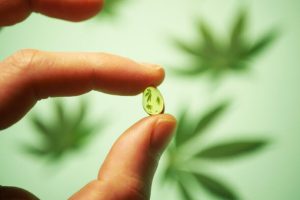
Microdosing CBD: Why Less is More
Many assume that more CBD means better results, but that’s not always true. Instead, taking smaller doses more frequently may be a smarter
read more
CBD and Cancer Treatment: Myths and Facts
Cancer is a formidable opponent, and traditional treatments like chemotherapy and radiation often bring severe side effects. In the search for relief, many
read more
CBD Extraction: Unveiling the Secrets
Diving into the world of CBD products can be a bit confusing at first. Therefore, understanding the extraction process is key to appreciating
read more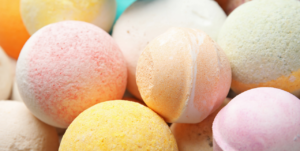
CBD Bath Bombs: DIY Guide
If you’re looking to turn your bath time into a spa-like experience, CBD bath bombs are the perfect addition to your routine. Infused
read more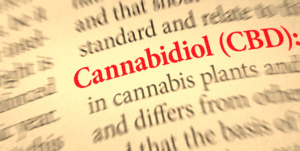
History of CBD: A Brief Retrospective
CBD, short for cannabidiol, has become increasingly popular in recent years for its potential health benefits. However, the history of CBD dates back
read more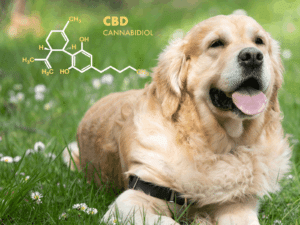
CBD For Dogs: The Complete Guide
CBD oil for dogs? If your ears just perked up, don’t be surprised. Dog lovers giving their puppies CBD is quickly becoming very
read moreOh Canada! CBD Oil 101 - An Introduction to Cannabidiol
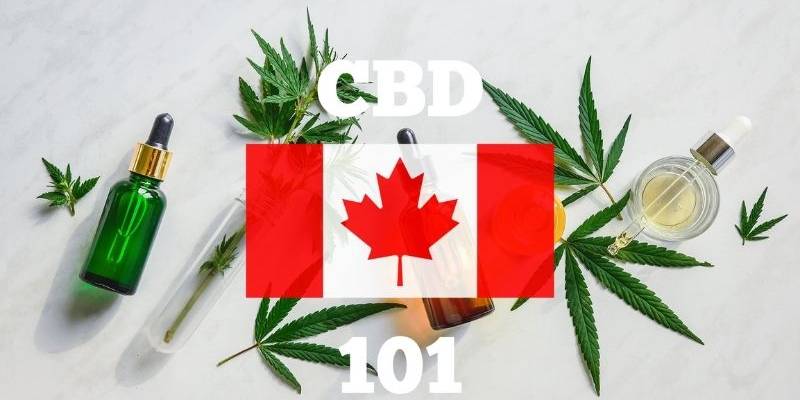
Get those creaky joints ready to dance a jig because apparently there’s a new panacea in town! Its name is CBD—which stands for Cannabidiol. Reputed to be effective for treating almost everything under the sun, think chronic pain, anxiety, arthritis, endometriosis, insomnia, CBD is still a mystery for the uninitiated. Reliable information can be hard to find. In this article, we’ve navigated the sea of buzz on the web to condense nourishing droplets of fact from the vapor of questionable claims. We’ll go over the science and provide CBD newbies with some best practices for buying and using CBD oil in Canada.
CBD, the new kid on the medicinal block.
In Canada, CBD oil has exploded onto the market in the last couple years, appearing in everything from sports drinks, to pet treats, to beauty products, to medicinal “confections” formulated to fight pain, anxiety and other conditions. You can eat it, drink it, drop it under your tongue, slather it onto your skin, smoke it or vape it. But one thing you can’t do is get high on it. While CBD comes from the cannabis plant—the same plant that produces marijuana—it has no psychoactive properties. In fact, it can even inhibit the compound that gets you high—THC—from working. This is why some people like to use THC and CBD together. CBD emphasizes THC’s medicinal properties while inhibiting the psychoactive ones.
Though there is a tremendous amount of anecdotal evidence on the web from CBD users claiming it has helped them, the science as to exactly how it helps is still unclear. That’s because, despite cannabis being used as medicine for over 4000 years, prohibition in Canada and the US up until 2018 made studying the compound difficult, if not impossible.
Now that research has resumed, we’re getting a clearer picture of how this supposed miracle compound works. CBD is a phytocannabinoid which interacts powerfully with the human endocannabinoid system (ECS)—the system in our bodies responsible for regulating stress, sleep, metabolism, memory, inflammation, immunity and more.
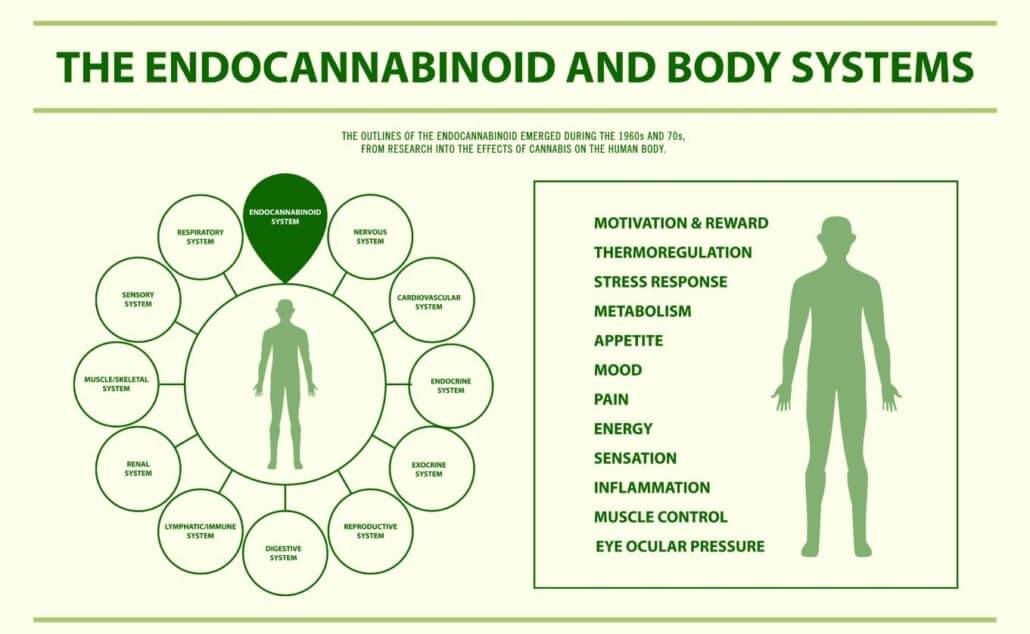
According to leading endocannabinoid scientist Bradley E. Alger, (PhD, Harvard) “…Endocannabinoids are literally a bridge between body and mind,” which explains why CBD can have such widespread effects across such a broad number of systems in our bodies.
These effects can vary significantly, however, because each individual’s endocannabinoid system is different and because CBD is biphasic. This means that different doses of CBD can have completely different effects. For example, a small dose might make you more alert, whereas a larger dose might make you more sleepy. That’s right! Two apparently opposite effects are possible from the same substance!
That’s why much more research is necessary. We need to find out exactly what CBD does in various concentrations when used for different conditions.
First, some terminology:
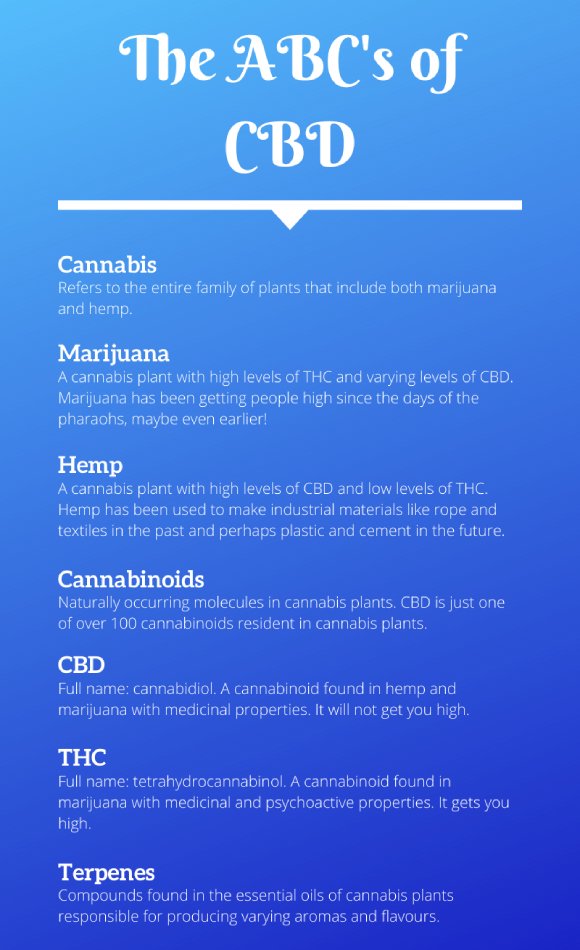
The Endocannabinoid System (ECS): a quick overview
All vertebrates have endocannabinoid systems, be they fish, birds, cats or dogs. Cannabinoid receptors can be found all over your body. The highest concentration is in your central nervous system and brain (where they’re called CB1 receptors) and in your immune system and inflammatory cells (where they’re called CB2 receptors). Your body produces billions of endocannabinoids every day. These bind to endocannabinoid receptors to help you sleep, eat, remember where you put your keys, and start healing after injury. When endocannabinoids have completed their tasks, they are eliminated by enzymes.
In your brain, endocannabinoids play a role similar to that of neurotransmitters—transporting messages from one neuron to another. However they differ from other neurotransmitters. rather than sending messages with instructions for your body, they actually slow down the brain’s signalling. According to Mohini Ranganathan, MBBS, associate professor of psychiatry at Yale University and a CBD researcher: “When there’s too much neurotransmission going on — which you might experience as a racing mind, high anxiety, or even an increase in pain — endocannabinoids in the brain help pump the brakes.” This likely explains why so many people in Canada swear by CBD’s anti-anxiety and anti-inflammatory effects.
Another function of cannabinoids is to balance endocannabinoid levels when there is either a shortage or over-production of these compounds. A healthy ECS makes its own endocannabinoids which affect the experience of anxiety or pain. However, for some cannabinoid production is too low—or in some cases, overactive enzymes eliminate them before they do their jobs. “We think CBD binds to those CB2 receptors to inhibit the release of pain signalling,” says Mark Wallace, MD, a professor of anesthesiology at the University of California San Diego. CBD is also thought to permit the body’s naturally-produced cannabinoids to remain in our bodies longer, prolonging their effects.
What has CBD been shown to do?
For relieving pain
CBD’s role in eliminating pain is multifaceted. For example, one way CBD works is by inhibiting the release of inflammatory agents like glutamate. This is what makes it a “neuroprotective.” CBD excels at dulling the burning, tingling and prickling sensations of neuropathic pain, especially when combined with other natural supplements such as magnesium glycinate.
Another way CBD works is by inhibiting the absorption of anandamide, a natural cannabinoid that regulates pain and is linked with feelings of well-being and happiness. CBD enhances anandamide signaling and helps reduce pain throughout the body.
One study on animals in the European Journal of Pain found that CBD applied topically could help reduce arthritis pain and inflammation. Another study on rodents found that CBD injections prevented inflammatory and nerve pain.
Additionally, a peer-reviewed research paper published in the British Journal of Pharmacology found that CBD alleviated severe neuropathic pain caused by chemotherapy in cancer patients. There’s also evidence that CBD relieves pain from multiple sclerosis. Not all results are so encouraging. In other studies, only 29% of those treated with CBD reported decreases in pain. However, results often vary due to researchers using ineffective doses or using poor quality CBD extracted from low-grade, government-grown hemp produced prior to CBD’s 2018 legalization.
Read more about CBD for pain.
For calming anxiety
Though more research needs to be done, there are a handful of studies that bolster CBD’s anti-anxiety credentials. One 2019 study of 72 adults who suffered from anxiety and poor sleep found that CBD helped alleviate both conditions within a month. Another study of 60 men and women found that while clonazepam consistently reduced anxiety better than both CBD and placebo, 300 mg of CBD significantly reduce anxiety compared to the placebo group.
In 2019, Remedy Review conducted a survey of over 1,000 people to see whether people felt CBD was effective in treating their anxiety, then compared that to results with pharmaceutical drugs. What they found was quite remarkable.
64% of those in the study reported CBD to be “extremely effective.” Although pharmaceutical drugs did a marginal 0.5% better, what this study tells us is that CBD is very close to being as effective as pharmaceuticals in treating anxiety. The added benefit?—CBD costs less and doesn’t cause addiction or serious side effects.
Already, there’s a growing body of evidence that CBD is good for:
- Generalized anxiety disorder
- Panic disorder
- Social anxiety disorder
- Obsessive–compulsive disorder (OCD)
- Post-traumatic stress disorder (PTSD)
Read more about CBD for anxiety.

For reducing menstrual pain and cramps
CBD works similarly to Ibuprofin, by decreasing your body’s production of inflammatory prostaglandins—the compounds that stimulate painful cramps. Not only do THC & CBD actually reduce the physical intensity of cramps, they reduce your ability to feel the pain they cause as well.
Although you can’t entirely eliminate prostaglandins, you can reduce the discomforts caused by prostaglandins. Here are all the properties CBD and other cannabinoids possess that reduce painful menstrual cramps:
- Anti-inflammatory: Cannabinoids target much more than just prostaglandins. For instance, THC activates endocannabinoid receptors CB2. When these are activated, they prevent macrophages from releasing inflammatory proteins called cytokines.
- Pain-relieving: Although prostaglandins and other inflammatory molecules can make pain-perceiving nerves more sensitive, cannabinoids can reduce those sensations by dialing down nerve responses. CBD and THC both interact with nerve receptors which play a role in decreasing the sensation of pain (TRPV1 and CB1, respectively). Amazingly, CBD doesn’t just affect TRPV1 receptors it interacts with directly. In fact, other pain receptors in the area not directly interacting with CBD seem to adopt the same response. The effect is a decrease in pain responses in neighbouring pain receptors.
- Muscle-relaxing: Menstrual cramps increase in severity as a result of contractions in smooth muscles that line the uterus. Fortunately it’s well established that cannabinoids relax smooth muscles. Both CBD and THC target receptors in muscle tissue which help relax contractions.
- Vascular-relaxing: Smooth muscle line blood vessels and have the ability to constrict or increase blood flow. Cannabinoids can prompt these smooth muscles to relax, allowing blood flow to increase. The benefit of increased blood flow is that tissues stressed by oxygen deprivation can then receive oxygen, decreasing stress in those tissues, and subsequently dialing down the intensity of painful cramps.
Read more about CBD for women’s health.
For controlling seizures
For treating schizophrenia
For improving sleep
Reportedly, nearly 80 percent people have trouble sleeping once a week. Some of the main worries about prescription and over-the-counter drugs is that they are ineffective and addictive.
Joseph Maroon, M.D., clinical professor and neurosurgeon at the University of Pittsburgh Medical Center, and a seasoned researcher on how cannabis affects the brain, says CBD appears to ease anxiety and pain, both of which can make it harder to fall or stay asleep.
For people whose pain interferes with sleep, CBD offers a promising alternative to pharmaceuticals. CBD has been show to reduce pain-induced sleeplessness by working on the pain symptoms themselves, whereas pharmaceutical drugs targeting sedation don’t address pain.
A 2017 review of sleep and cannabis in the journal Current Psychiatry Reports showed CBD might influence sleep directly by stimulating receptors in the brain that govern daily sleep/wake cycles.
We’re also learning that CBD regulates cortisol—a stress hormone, which has a significant impact on non-REM sleep cycles. A large case series review found that CBD was beneficial for anxiety-related disorders and increased people’s sleep quality.
Read more about CBD for sleep.
For improving skin health
 There is hard proof CBD reduces inflammation and pain when applied topically. At the very least, we know CBD is a great source of antioxidants and beneficial amino acids.
There is hard proof CBD reduces inflammation and pain when applied topically. At the very least, we know CBD is a great source of antioxidants and beneficial amino acids.
The need for more research prevents some doctors from completely endorsing CBD, despite results so far. Cosmetic dermatologist Shereene Idriss, M.D., of Union Square Laser Dermatology said, “There’s a 2014 study in the Journal of Clinical Investigation that showed promising results for using CBD to treat acne.” Dr. Idriss has high hopes for CBD, but she can’t recommend it until she sees additional research.
Still, there are some doctors who are happy giving advice. NYC cosmetic dermatologist Sejal Shah, M.D. said, “Generally, CBD is well tolerated by all skin types, but be sure to look for it in products that best suit your skin type.” Although CBD won’t cause irritation, other ingredient in skin care product might. “Just as you would with any new product, start ones containing CBD with caution and stop using it if [you] develop a negative reaction,” she said.
“CBD has been shown to be soothing to the skin, and has been used in the treatment of acne and rosacea as well as eczema and dryness,” said Shirley Chi, MD, a Los Angeles-based dermatologist. “The anti-inflammatory properties of CBD can help decrease itching and puffiness of skin, and even treat soreness of the skin,” she added.
Read more about CBD for skin and beauty.

Is CBD oil legal in Canada?
Is CBD safe? What about side effects? Overdoses?
There are no instances of people overdosing on CBD oil in Canada or anywhere else. CBD is safe and humans tolerate large doses well. It is possible to feel a few side effects if you take far too much though, including diarrhea, appetite changes, and fatigue. However, people have been prescribed 1500 mg of CBD per day—the entire contents of a typical bottle—without any side effects. Typically, a bottle should last you 2-4 weeks.
One thing that is important to note is that CBD can interact with other medications, so if you are on any prescription medications or drugs of any kind, you should talk to your doctor about taking CBD to make sure you don’t experience any unwanted drug interactions.
The FDA strongly advises against using CBD if you are pregnant or breastfeeding.
What are the different ways to take CBD Oil in Canada?
There are no instances of people overdosing on CBD oil in Canada or anywhere else. CBD is safe and humans tolerate large doses well. It is possible to feel a few side effects if you take far too much though, including diarrhea, appetite changes, and fatigue. However, people have been prescribed 1500 mg of CBD per day—the entire contents of a typical bottle—without any side effects. Typically, a bottle should last you 2-4 weeks.
One thing that is important to note is that CBD can interact with other medications, so if you are on any prescription medications or drugs of any kind, you should talk to your doctor about taking CBD to make sure you don’t experience any unwanted drug interactions.
The FDA strongly advises against using CBD if you are pregnant or breastfeeding.
What are the different ways to take CBD Oil in Canada?
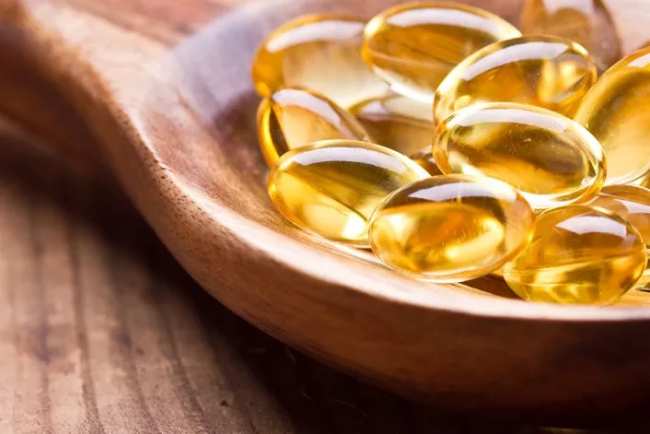 Edibles. CBD oils and tinctures mixed into anything you can eat, including gummies, chocolates, drinks, coffee, popcorn, salad dressing and more.
Edibles. CBD oils and tinctures mixed into anything you can eat, including gummies, chocolates, drinks, coffee, popcorn, salad dressing and more.
How they work. When CBD goes through the digestive system, only a small percentage gets absorbed, “If you ingest 100 mg of CBD only about 5 mg may end up in your bloodstream,” says Dr. Ranganathan. If you want to feel a stronger effect, you may have to increase the dosage.
Many people enjoy edibles because they are discreet, one just looks like they’re eating run-of-the-mill gummy bears or treats. Edibles release CBD more gradually through your system than other methods, so this is a better delivery method if you want CBD active in your system over a longer period.
Sublingual. Oils and tinctures designed to be held under your tongue before swallowing.
How it works: To get CBD to your brain, the best way is to use a dropper and put a few drops under your tongue. There’s a very high concentration of blood vessels there and it’s close to the brain. Don’t swallow right away, leave it under your tongue 30-90 seconds. The liver filters CBD quite efficiently, so this method is superior to ingesting it.
Topicals. CBD-infused creams and balms you rub on sore areas like knees, back or arthritic hands.
How they work: For localized pain, as in the case of muscle spasms and arthritis pain, it might be advisable to try a CBD-infused balm, pain stick, transdermal patch, or even to apply CBD oil directly to your skin. While CBD has limited bioavailability when ingested, CBD has longer lasting therapeutic effects when absorbed through your skin.
CBD capsules. Capsules filled with oil you swallow like a traditional supplement. Packaged like bottles of vitamins or supplements, they contain gel caps filled with a golden oil.
How they work: Almost identically to other edibles. It’s quicker to consume these than by chewing a gummy, however the cbd oil must still pass through the digestive tract, ensuring that the liver can remove some of the CBD before it enters the bloodstream.
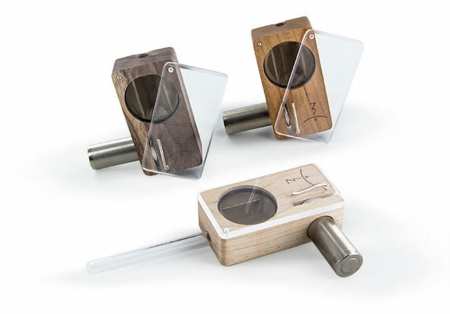
CBD vape oil. These can be pre-filled oil cartridges that attach to vape batteries or vape juice for use in e-cigarettes.
How they work: These by-pass the liver, ensuring high bio-availability and are a good method of taking CBD if you want to experience the effects more quickly. However, there are numerous concerns with the health impacts of vaping.
Smoking/vaping CBD flower: Using joint made from CBD-dominant cannabis flower or a vaporizer.
How it works: Another way to inhale CBD through the lungs. Though smoking a CBD-dominant cannabis strain like Charlotte’s Web still comes with the tar and smoke of a regular joint (and perhaps a little THC as well), it is possible to vape CBD-dominant flower using specialized vaporizers built specifically for that purpose.
Buying CBD? A few rules of thumb:
✘ DON’T trust labels. In a 2017 JAMA study of 84 CBD products purchased online, 43% had more CBD than indicated, 26% had less, and some contained THC. When purchasing CBD, ask to see the lab results proving the contents are as they state.
✘ DON’T hunt for bargains. “Good CBD is expensive,” says Dr. Wallace. “CBD manufacturers have to do a lot of extraction to get CBD oil from hemp plants, and while they’re getting more efficient at that process, it’s time-consuming and expensive.” That’s why quality CBD can cost more than $100 for a 1-ounce bottle of oil.
✘ DON’T believe the hype about the ideal dose. No matter which way you decide to take CBD, the rule of thumb is “start low, go slow.” There’s no prescribed dosage for CBD, and since it acts differently on different people according to their condition, weight, body chemistry and other factors, finding the right dose usually involves a little experimentation. Read more about proper CBD use and dosage.
A few more tips for buying CBD oil in Canada:
- buy from health-minded sources – no gas stations,
- read labels carefully; hemp oil isn’t CBD oil for example,
- avoid products sourced from hemp seed or stalks,
- look for products that have information for reporting negative effects and
- look for lab-tested products.
Other resources:
Canada’s Dani Gordon specializes in Cannabis medicine. Her YouTube channel is highly informative for those seeking education about the benefits of CBD oil in Canada.
Disclaimer
This information does not constitute medical advice and it should not be relied upon as such. Consult with your doctor before modifying your regular medical regime. Our websites content is provided as a service; all content is solely for informational purpose only and is intended to facilitate communication between you and your healthcare provider. We do not represent in any manner whatsoever that the content of our website contains the opinions of a healthcare professional


